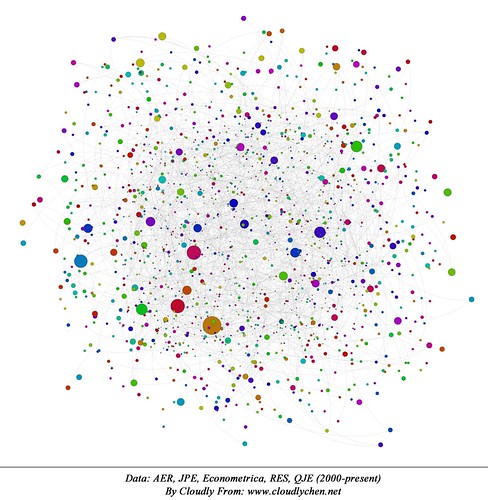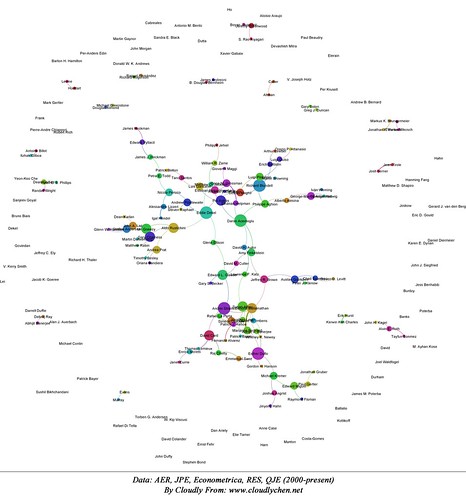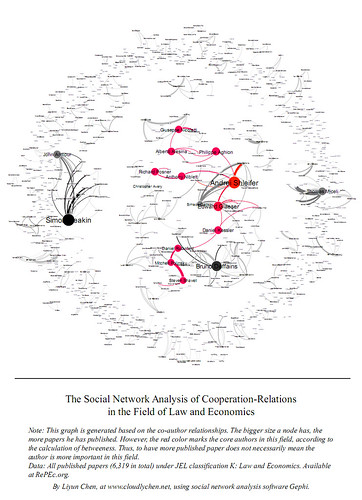It is a little funny that while I was trying to build the psychological-economic model in partner matching, two papers appeared in front of me, and they are all about link prediction:
- Linyuan Lu y Tao Zhou, “Link Prediction in Complex Networks: A Survey,” 1010.0725 (Octubre 4, 2010), http://arxiv.org/abs/1010.0725.
- D. Liben-Nowell y J. Kleinberg, “The link-prediction problem for social networks,” Journal of the American Society for Information Science and Technology 58, no. 7 (2007): 1019-1031.
Nowadays as an economics student, one important thing you can never overlook is math. That is why sometimes I feel that I am paying more attention to math instead of those economic thoughts. Yes we always stress economic intuitions. However, when it comes to the time problem, apparently math training acquires more time. More important, you may not able to build the entire economic intuition system only through lectures. Outside of the classroom is the place where you can really recognize the sense of how economics is related to people’s everyday life. Newspapers, street talks, and even TV shows may be more helpful.
Well… a little off topic. Today when I was listening to Thijs, suddenly a question not relative to any materials from that course came to my mind. What do we really care? Explanation, or prediction power? Of course they cannot be separated with each other. However, when it comes to prediction, it seems that people care more about the accuracy instead of why this or that method is working well. The best example may be the variety of methods of stock prices predicting. Once when I attended a statistics conference, there was someone who talked about his beautiful “triangle” prediction model of stock prices. For me, it does not make any sense. First, I’m not in the stock market, so I do not care; second, this kind of prediction methods are built above the cloud – there is no foundations which can even partly support the logic beyond the seemly accurate results. It may be unfair to attribute those meaningless methods to physicians – however, more of them studied physics before and they are somehow trying to transplant those solid physical theorems to economics, regardless the fact that economics is a branch of social science, which studies the (economic) functions of the society, the interactions among people and the fundamental reasons behind human behaviors. That is why whenever I see any model directly related to physics, I’m more careful about the economic implications behind the model: at least it should not be contra-intuitive.
Now myself is trying to borrow something from physics…. Obviously the first rule for me it to be as cautious as I can. In particular, I am trying to apply the link prediction idea to economic and social network analysis. Somewhat like the debate about reduced form and structural form in econometrics, I do not want to lose the micro foundations and economic intuitions behind the fancy model itself. It is easier if I just want to predict the result, but with consideration of internal and external validity, the model should be granted with more explanation power, which can conquer the difficulties originated from the complexity of the real society. Actually, I am fond of the name of this branch of science – complex network. How can we abstract simplicity from the complicated world? That may be the common question confronted by every single branch of science, no matter social science or hard/natural science. Without idea experiments in social science, how far can we go? It is really a difficult question to answer….
Anyway, hopefully I can find out a way to introduce link prediction ideas to my naive economic model. It is always interesting to work on the boundary of two different fileds, and you are tasting something new. However, the exams are coming so fast... need to focus on reviewing first.... Will update more later.




